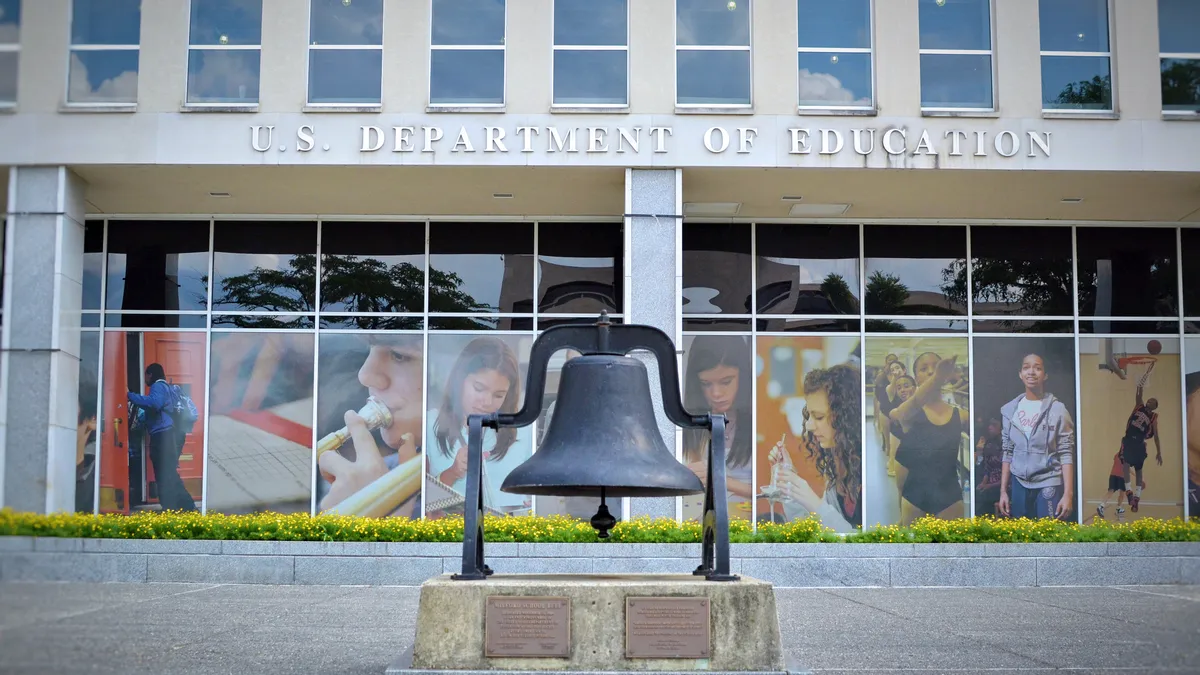The University of Vermont grabbed headlines recently with a number: 27. The figure represents an eye-popping one-fifth of the College of Arts and Sciences' academic programs, which are on the chopping block as the economic fallout of the coronavirus ravages the institution's budget.
It is not alone. Even though state flagships, such as the U of Vermont, are inherently more prepared to endure the crisis than many other types of institutions because of their wealth, they are proving to not be immune from its unprecedented effect on colleges' finances.
"At the end of the day, the flagships are winners, but everyone is losing right now," said Rachel Fishman, deputy director for education policy research at left-leaning think tank New America. "It's not a pretty picture."
Buyouts, layoffs and trades
The financial challenges facing higher education are myriad. Income from their auxiliary enterprises, such as housing and parking, has been severely diminished, especially after many institutions issued room and board refunds this spring. Some states have enacted budget cuts, and more are anticipated.
As a result, many flagships — despite several seeing enrollment increases this fall — have ended up with budget deficits in the tens of millions of dollars and needed to pursue various austerity measures.
Some, such as the University of Kansas, put forward buyouts or other retirement incentives to cut costs. Nearly 150 employees took U of Kansas' buyout offer.
But state flagships haven't avoided layoffs. The University of Arizona eliminated 250 jobs this summer as budget stressors became more apparent. The University of Delaware laid off more than 120 employees in October and Rutgers University cut about 1,000 employees.
Others have considered cutting tenure-track faculty. The interim dean of the University of Colorado Boulder's College of Arts and Sciences proposed replacing tenure-track faculty with other instructors for an estimated savings of $6.2 million. The college would eliminate 50 tenure-track faculty and add 25 instructors.
Many of the potential program cuts nationwide are within the arts and sciences and focus on high-cost, low-enrollment offerings, said Robert Kelchen, a higher education professor at Seton Hall University, in New Jersey. The University of Nebraska-Lincoln, which is preparing to slash $22 million from its budget through fiscal 2023, is reducing funding to its College of Arts and Sciences by more than $5 million during that period, the largest reduction to any college.
Many institutions were mulling these types of cuts before the pandemic. Not only has the health crisis accelerated their plans, but it also makes the unpopular decisions easier to justify, Kelchen said. "They wanted to eliminate these already."
'They are going to have more advantages'
Still, cutbacks are painful.
Continued stress on multiple revenue streams and the absence of more federal relief are compounding the problem, said Tom Harnisch, the vice president for government relations at the State Higher Education Executive Officers Association.
President Donald Trump signed the Coronavirus Aid, Relief and Economic Security (CARES) Act into law more than eight months ago, providing $14 billion in higher education relief. Since then, talks over another aid package have been sporadic and largely stalled, though in recent weeks lawmakers have restarted negotiations. One of the latest proposals, from a bipartisan group of lawmakers, would offer $82 billion in education funding for K-12 and higher ed. But it's unclear how much colleges would get.
Education groups, led by the American Council on Education, asked Congress for $120 billion in postsecondary relief funding.
More federal aid is crucial in part because the initial round helped fill in colleges' funding gaps after states made immediate cuts, said Fishman, whose organization is tracking the effects of the crisis on state budgets.
Institutions likely won't get a sense of how bad their finances will get for another academic year, said Dominique Baker, an education policy professor at Southern Methodist University, in Texas. "A significant chunk" of the cuts are driven by longtime disinvestment in higher ed, she said. States have typically reduced higher ed spending during periods of economic contraction, as other pieces of their budgets are mandatory or viewed as more essential.
"It was one of the reasons that funding relief from the federal government, with maintenance requirements from states, will be critical in allowing U.S. higher education to come through this pandemic successfully," Baker said.
Absent additional relief, higher ed is in trouble, Fishman said. She predicted public institutions, including flagships, would need to increase tuition next year to relieve the financial pressure. Florida's state schools are debating whether to raise tuition to alleviate an estimated $2.7 billion budget deficit, an idea that has some play among lawmakers.
U of Vermont will likely freeze tuition next academic year, while the other public institutions in the state are doing the same and also exploring a consolidation of several institutions.
Flagships will likely remain on more financially sound ground than regional colleges or community colleges, Fishman said. Money follows students, and those institutions tend to enroll the most students.
Undergraduate enrollment is projected to be down sectorwide this fall, particularly among first-time students, though public four-year colleges have fared better than two-year schools, according to preliminary data from the National Student Clearinghouse Research Center.
A recent Moody's Investors Service report noted, however, that large, comprehensive universities will be better positioned than most smaller regional colleges to handle the financial challenges of declining enrollments and subsequently shrinking tuition revenue.
For one, flagships have more options to mitigate budget shortfalls, Fishman said. Credit is particularly cheap right now, and she said public schools could save money by refinancing some of their debt. Virginia's governor has floated a refinancing plan for construction bonds, which could save $300 million across the state's colleges during the next two years.
"Flagships will weather this storm," she said. "But they are going to have more advantages than these other institutions."






















